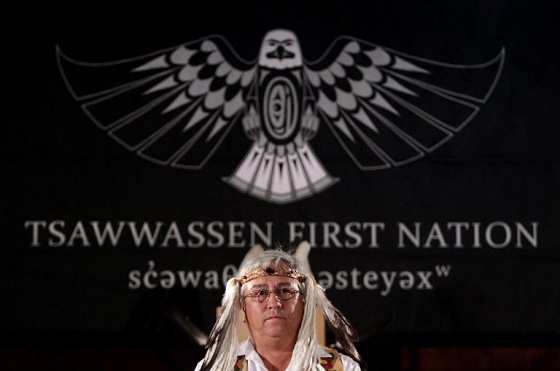Alberta
Two Alberta UCP members kicked out of caucus after challenging Kenney’s leadership
EDMONTON — Members of Premier Jason Kenney’s United Conservative Party caucus have voted to turf two of their own for challenging the leader.
Backbencher Todd Loewen was ejected Thursday night after publicly announcing earlier in the day the party is adrift and out of touch under Kenney and that the premier must quit before things spiral further.
Backbencher Drew Barnes had been the most vocal critic of the government’s COVID-19 health restrictions, saying they are of questionable effect and an intolerable infringement on personal freedoms. He was also voted out.
“Members recognize the need for government caucus to remain strong and united behind our leader, Premier Jason Kenney, as we continue to fight through what looks to be the final stages of the COVID-19 pandemic and beyond,” UCP whip Mike Ellis said in a statement.
“There is simply no room in our caucus for those who continually seek to divide our party and undermine government leadership, especially at this critical juncture.”
Kenney’s spokeswoman, Jerrica Goodwin, added in a statement: “The premier is proud to stand with his caucus colleagues and lead Alberta through the greatest health and economic crisis in a century.”
Loewen, representing the northern rural riding of Central Peace-Notley, had been the chair of the UCP caucus. Barnes represents Cypress-Medicine Hat in the south.
Loewen and Barnes join a third backbencher, Pat Rehn, who was expelled earlier this year after his constituents complained he wasn’t doing any work or listening to their concerns.
Weeks of bubbling internal discontent within the caucus boiled over into an open challenge by Loewen in a public letter to Kenney published on Loewen’s Facebook page in the pre-dawn hours Thursday.
In the letter, Loewen called on the premier to resign, saying he no longer sees a commitment to teamwork and party principles.
“We did not unite around blind loyalty to one man. And while you promoted unity, it is clear that unity is falling apart,” writes Loewen.
He accused Kenney and his government of weak dealings with Ottawa, ignoring caucus members, delivering contradictory messages, and botching critical issues such as negotiations with doctors and a controversy over coal mining in the Rocky Mountains.
“Many Albertans, including myself, no longer have confidence in your leadership,” Loewen says in the letter.
“I thank you for your service, but I am asking that you resign so that we can begin to put the province back together again.”
In a radio interview later in the day, Loewen said he wanted to stay in the UCP and that he was not seeking to split the party but save it from looming disaster in the next election.
“The people are upset. They are leaving the party,” Loewen told 630 CHED. “We need to do what it takes to stop the bleeding.
“We need to have our constituency associations strong. We’ve got to quit losing board members.”
Loewen later received a message of support from a second UCP backbencher, Dave Hanson.
Hanson wrote on Facebook: “Todd, I applaud your courage and stand behind your decision.
“I hear the same thing from our supporters in my area. I along with many of our colleagues share in your frustration.”
Hanson, Barnes and Loewen are three of 18 UCP backbench members who broke with the government in early April over restrictions aimed at reducing the spread of COVID-19. The group said the rules were needlessly restrictive and infringed on personal freedoms. Sixteen wrote an open letter expressing those concerns.
Since then Barnes has remained vocal, actively questioning why the regulations are needed in low-infection areas and demanding to see data underlying the health decisions.
Kenney tolerated the open dissension for weeks. He has said he believes in free speech and that backbenchers are not in cabinet and don’t speak for his government. But Loewen was the first to openly challenge Kenney’s leadership.
Kenney’s poll numbers, along with party fundraising contributions, have dropped precipitously during the pandemic while those of Rachel Notley’s NDP have climbed.
Notley said regardless of Kenney’s internal political troubles, Albertans need to see him focus on governing the province.
Alberta has seen in recent weeks some of the highest COVID-19 case rates in North America that threaten to swamp the province’s health system.
“It’s not looking good,” said Notley.
“What we need as a result is for the premier to clean up his house, get his house in order and provide the kind of leadership that Albertans desperately need during one of the most challenging times in our history.”
There were rumours of a widening internal UCP breach two weeks ago when Kenney suspended the legislature’s spring sitting. He said it was to keep staff and legislature members safe from COVID-19.
On Wednesday, the government extended the hiatus for another week.
Political scientist Duane Bratt said Kenney had little choice but to expel Loewen but noted it took several hours of debate among the caucus to get there.
“This is not a good day for Jason Kenney. He is wounded by this. And I don’t think it’s over,” said Bratt with Mount Royal University in Calgary.
Pollster Janet Brown said the open dissension magnifies Kenney’s leadership woes. Brown said a premier relies on three pillars of support: party fundraising, caucus support and support in the popularity polls. Any one of those three can help offset crises somewhere else.
But Kenney, said Brown, doesn’t have support in any area right now.
“If you’re down in the polls, if you don’t have the confidence of your caucus and your donors are keeping their hands in their pockets, what’s your justification for continuing?” said Brown.
“It seems like he’s failing with all three audiences.”
This report by The Canadian Press was first published May 13, 2021.
Dean Bennett, The Canadian Press
Alberta
Premier Smith: Canadians support agreement between Alberta and Ottawa and the major economic opportunities it could unlock for the benefit of all

From Energy Now
By Premier Danielle Smith
Get the Latest Canadian Focused Energy News Delivered to You! It’s FREE: Quick Sign-Up Here
If Canada wants to lead global energy security efforts, build out sovereign AI infrastructure, increase funding to social programs and national defence and expand trade to new markets, we must unleash the full potential of our vast natural resources and embrace our role as a global energy superpower.
The Alberta-Ottawa Energy agreement is the first step in accomplishing all of these critical objectives.
Recent polling shows that a majority of Canadians are supportive of this agreement and the major economic opportunities it could unlock for the benefit of all Canadians.
As a nation we must embrace two important realities: First, global demand for oil is increasing and second, Canada needs to generate more revenue to address its fiscal challenges.
Nations around the world — including Korea, Japan, India, Taiwan and China in Asia as well as various European nations — continue to ask for Canadian energy. We are perfectly positioned to meet those needs and lead global energy security efforts.
Our heavy oil is not only abundant, it’s responsibly developed, geopolitically stable and backed by decades of proven supply.
If we want to pay down our debt, increase funding to social programs and meet our NATO defence spending commitments, then we need to generate more revenue. And the best way to do so is to leverage our vast natural resources.
At today’s prices, Alberta’s proven oil and gas reserves represent trillions in value.
It’s not just a number; it’s a generational opportunity for Alberta and Canada to secure prosperity and invest in the future of our communities. But to unlock the full potential of this resource, we need the infrastructure to match our ambition.
There is one nation-building project that stands above all others in its ability to deliver economic benefits to Canada — a new bitumen pipeline to Asian markets.
The energy agreement signed on Nov. 27 includes a clear path to the construction of a one-million-plus barrel-per-day bitumen pipeline, with Indigenous co-ownership, that can ensure our province and country are no longer dependent on just one customer to buy our most valuable resource.
Indigenous co-ownership also provide millions in revenue to communities along the route of the project to the northwest coast, contributing toward long-lasting prosperity for their people.
The agreement also recognizes that we can increase oil and gas production while reducing our emissions.
The removal of the oil and gas emissions cap will allow our energy producers to grow and thrive again and the suspension of the federal net-zero power regulations in Alberta will open to doors to major AI data-centre investment.
It also means that Alberta will be a world leader in the development and implementation of emissions-reduction infrastructure — particularly in carbon capture utilization and storage.
The agreement will see Alberta work together with our federal partners and the Pathways companies to commence and complete the world’s largest carbon capture, utilization and storage infrastructure project.
This would make Alberta heavy oil the lowest intensity barrel on the market and displace millions of barrels of heavier-emitting fuels around the globe.
We’re sending a clear message to investors across the world: Alberta and Canada are leaders, not just in oil and gas, but in the innovation and technologies that are cutting per barrel emissions even as we ramp up production.
Where we are going — and where we intend to go with more frequency — is east, west, north and south, across oceans and around the globe. We have the energy other countries need, and will continue to need, for decades to come.
However, this agreement is just the first step in this journey. There is much hard work ahead of us. Trust must be built and earned in this partnership as we move through the next steps of this process.
But it’s very encouraging that Prime Minister Mark Carney has made it clear he is willing to work with Alberta’s government to accomplish our shared goal of making Canada an energy superpower.
That is something we have not seen from a Canadian prime minister in more than a decade.
Together, in good faith, Alberta and Ottawa have taken the first step towards making Canada a global energy superpower for benefit of all Canadians.
Danielle Smith is the Premier of Alberta
Alberta
A Memorandum of Understanding that no Canadian can understand

From the Fraser Institute
The federal and Alberta governments recently released their much-anticipated Memorandum of Understanding (MOU) outlining what it will take to build a pipeline from Alberta, through British Columbia, to tidewater to get more of our oil to markets beyond the United States.
This was great news, according to most in the media: “Ottawa-Alberta deal clears hurdles for West Coast pipeline,” was the top headline on the Globe and Mail’s website, “Carney inks new energy deal with Alberta, paving way to new pipeline” according to the National Post.
And the reaction from the political class? Well, former federal environment minister Steven Guilbeault resigned from Prime Minister Carney’s cabinet, perhaps positively indicating that this agreement might actually produce a new pipeline. Jason Kenney, a former Alberta premier and Harper government cabinet minister, congratulated Prime Minister Carney and Premier Smith on an “historic agreement.” Even Alberta NDP Leader Naheed Nenshi called the MOU “a positive step for our energy future.”
Finally, as Prime Minister Carney promised, Canada might build critical infrastructure “at a speed and scale not seen in generations.”
Given this seemingly great news, I eagerly read the six-page Memorandum of Understanding. Then I read it again and again. Each time, my enthusiasm and understanding diminished rapidly. By the fourth reading, the only objective conclusion I could reach was not that a pipeline would finally be built, but rather that only governments could write an MOU that no Canadian could understand.
The MOU is utterly incoherent. Go ahead, read it for yourself online. It’s only six pages. Here are a few examples.
The agreement states that, “Canada and Alberta agree that the approval, commencement and continued construction of the bitumen pipeline is a prerequisite to the Pathways project.” Then on the next line, “Canada and Alberta agree that the Pathways Project is also a prerequisite to the approval, commencement and continued construction of the bitumen pipeline.”
Two things, of course, cannot logically be prerequisites for each other.
But worry not, under the MOU, Alberta and Ottawa will appoint an “Implementation Committee” to deliver “outcomes” (this is from a federal government that just created the “Major Project Office” to get major projects approved and constructed) including “Determining the means by which Alberta can submit its pipeline application to the Major Projects Office on or before July 1, 2026.”
What does “Determining the means” even mean?
What’s worse is that under the MOU, the application for this pipeline project must be “ready to submit to the Major Projects Office on or before July 1, 2026.” Then it could be another two years (or until 2028) before Ottawa approves the pipeline project. But the MOU states the Pathways Project is to be built in stages, starting in 2027. And that takes us back to the circular reasoning of the prerequisites noted above.
Other conditions needed to move forward include:
The private sector must construct and finance the pipeline. Serious question: which private-sector firm would take this risk? And does the Alberta government plan to indemnify the company against these risks?
Indigenous Peoples must co-own the pipeline project.
Alberta must collaborate with B.C. to ensure British Columbians get a cut or “share substantial economic and financial benefits of the proposed pipeline” in MOU speak.
None of this, of course, addresses the major issue in our country—that is, investors lack clarity on timelines and certainty about project approvals. The Carney government established the Major Project Office to fast-track project approvals and provide greater certainty. Of the 11 project “winners” the federal government has already picked, most either already had approvals or are already at an advanced stage in the process. And one of the most important nation-building projects—a pipeline to get our oil to tidewater—hasn’t even been referred to the Major Project Office.
What message does all this send to the investment community? Have we made it easier to get projects approved? No. Have we made things clearer? No. Business investment in Canada has fallen off a cliff and is down 25 per cent per worker since 2014. We’ve seen a massive outflow of capital from the country, more than $388 billion since 2014.
To change this, Canada needs clear rules and certain timelines for project approvals. Not an opaque Memorandum of Understanding.
-

 Business2 days ago
Business2 days agoRecent price declines don’t solve Toronto’s housing affordability crisis
-

 MAiD18 hours ago
MAiD18 hours agoFrom Exception to Routine. Why Canada’s State-Assisted Suicide Regime Demands a Human-Rights Review
-

 MAiD2 days ago
MAiD2 days agoHealth Canada report finds euthanasia now accounts for over 5% of deaths nationwide
-

 Daily Caller2 days ago
Daily Caller2 days agoTech Mogul Gives $6 Billion To 25 Million Kids To Boost Trump Investment Accounts
-

 Automotive1 day ago
Automotive1 day agoPower Struggle: Governments start quietly backing away from EV mandates
-

 Energy2 days ago
Energy2 days agoUnceded is uncertain
-

 Business16 hours ago
Business16 hours agoCarney government should privatize airports—then open airline industry to competition
-

 Business1 day ago
Business1 day agoNew Chevy ad celebrates marriage, raising children





